Bees in winter
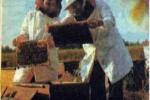
The wintering of bees is divided into two periods: the first – rest, which lasts until the appearance of brood (mid-February – early March); the second – the pre-spring, to the setting of bees from
The Honey Boss

TESTO: 500 g of honey, 1 kg of flour, 200 g of butter, 200 g of sugar, 1/2 cup of milk, 2 eggs, 1 teaspoon of ground cinnamon and cloves, 3 grains of odorous pepper,
Limitation of the laying of eggs by the uterus

Some beekeepers persistently recommend limiting (laying down) the laying of eggs by the uterus during the main bribe, claiming that such a technique can get much more honey than with complete freedom of drafting. At
Enemies and pests of bees
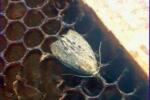
Moth, or wax moth. This is the most intrusive pest of honeycombs, and sometimes the brood of bees. There are several types of moths. On our apiaries are seen two of its kind: larger and
Diseases of adult bees
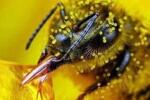
The most common diseases of adult bees are caused by parasites; most pathogens of these diseases have microscopic dimensions (for example, the causative agent of nosematosis), but there are also visible by a simple eye
Nuts with honey

Fresh nuts to peel, peel, dry. White honey boil until it turns red. Stir all the while, pour in so many nuts, so that the mass becomes thick. Brew is not very long. Try: If
Fruit pie with honey

For the filling you can take any fruits: apples, pears, plums, cherries, peaches. Shape the cake oil, apples or pears cut into thin slices, removing the core. Top with 2 handfuls of any small berries:
Thickened honeycombs

It is known that bees can build thickened honeycombs. Extending cells to 32-35 mm, they Thereby more economically placing the feed reserves, while leaving more free cells for brood. In addition, on such honeycombs, the
Peace-loving insects of bees

No matter how strange it seems, bees are insects peaceful. Perhaps, everyone had to visit a flowering garden or admire the multicolored meadow grasses. Thousands of bees work at this time on flowers. And neither
Recipes of fruits with honey

Berries (viburnum, raspberry, strawberry) with snow. Kill the proteins and add honey. Berries put in a la carte dishes and decorate with whipped proteins on top. 500 g of berries, 2 tablespoons of honey, squirrels
Bees live by families
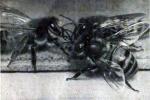
Honey bees live not alone, like many other insects, but in large communities, families. They are, like bumblebees, ants and wasps, and are therefore called public insects. In the family of honey bees, as in
Cultivation of queens
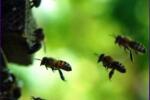
Look at this time in the nest. In the corners and at the bottom of the frames you will see areas with a drone brood. On the edges of the honeycomb and in the indentations
Collecting pollen by bees

Dust collector from a milk package. In the individual sector, more than 1.6 million bee colonies. Next to honey and wax, a valuable product for an amateur is flower pollen. For nutritional value it can
Duck with honey

1 duck weighing 2.5 kg, 1 teaspoon salt, 1/2 teaspoon ground red pepper, 1/2 cup honey, 1/3 cup orange lime, lemon juice, 1 / g teaspoon mustard flour, 5 slices of lemon, 5 circles of
Honey food product
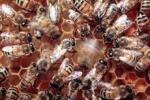
The value of honey as a food and medicinal product. Honey is known as a food product for a very long time. Excellent taste qualities of honey are perfectly combined with its high nutritional content
